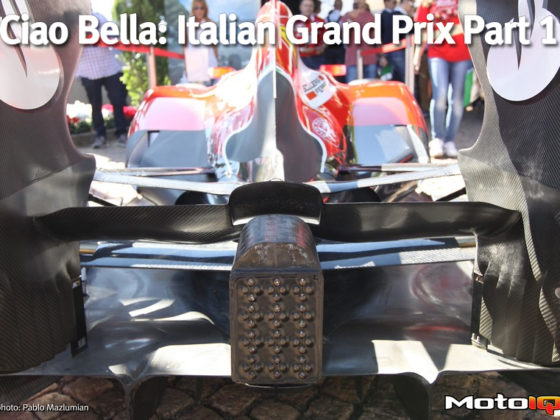,
 On the right is the factory open differential, the Kaaz unit is on the left. The ring gear is being removed from the factory unit (the bolts are left-hand thread in this case), and will be mounted to the new differential using the new bolts provided, which are right-hand thread. The gear will actually be flipped over and mounted on the opposite side of the new unit. This is necessary because of the configuration of the clutch assembly inside the new diff.
On the right is the factory open differential, the Kaaz unit is on the left. The ring gear is being removed from the factory unit (the bolts are left-hand thread in this case), and will be mounted to the new differential using the new bolts provided, which are right-hand thread. The gear will actually be flipped over and mounted on the opposite side of the new unit. This is necessary because of the configuration of the clutch assembly inside the new diff. Inspection of clearances on the shafts showed us that everything was within tolerance, but a few of the synchros were right at the limit. We pulled the shafts apart for a closer inspection of everything, and reassembled them with carbon-lined units from Synchrotech Transmissions. The carbon synchros are lighter than the factory units, and feature an improved lock angle, which should help us achiever smoother, faster shifts and better durability.
Inspection of clearances on the shafts showed us that everything was within tolerance, but a few of the synchros were right at the limit. We pulled the shafts apart for a closer inspection of everything, and reassembled them with carbon-lined units from Synchrotech Transmissions. The carbon synchros are lighter than the factory units, and feature an improved lock angle, which should help us achiever smoother, faster shifts and better durability. After a thorough cleaning of everything, the gearbox comes together. The diff goes in first, followed by the shafts and shift forks as a unit. It takes a little wiggling and twisting, but when it lines up correctly it settles into place without any undue force.
After a thorough cleaning of everything, the gearbox comes together. The diff goes in first, followed by the shafts and shift forks as a unit. It takes a little wiggling and twisting, but when it lines up correctly it settles into place without any undue force. After the shift mechanism is reinstalled, a light film of Hylomar goes on each case half, and the case is ready for reassembly. Hylomar blue sealant is my best friend. This is the Aerograde version, but the regular stuff works great, too. Anyone who has assembled one of these transmissions knows that another tricky operation is getting the case halves perfectly lined up with each other and all of the shafts at the same time. There is no gasket used, the cases uses a liquid sealant. The factory sealant – Hondabond – is really good stuff, but if you take too long getting everything lined up, the sealant dries and doesn’t perform as intended. Invariably, something goes a little wrong and you need to clean and re-seal again. Hylomar is non-drying – so you can take your time. It’s used to seal the turbine faces on Rolls-Royce jet engines, so you know it will do the job. I use it on motorcycle engine cases, too, as well as to coat gaskets so that they are re-useable if necessary.
After the shift mechanism is reinstalled, a light film of Hylomar goes on each case half, and the case is ready for reassembly. Hylomar blue sealant is my best friend. This is the Aerograde version, but the regular stuff works great, too. Anyone who has assembled one of these transmissions knows that another tricky operation is getting the case halves perfectly lined up with each other and all of the shafts at the same time. There is no gasket used, the cases uses a liquid sealant. The factory sealant – Hondabond – is really good stuff, but if you take too long getting everything lined up, the sealant dries and doesn’t perform as intended. Invariably, something goes a little wrong and you need to clean and re-seal again. Hylomar is non-drying – so you can take your time. It’s used to seal the turbine faces on Rolls-Royce jet engines, so you know it will do the job. I use it on motorcycle engine cases, too, as well as to coat gaskets so that they are re-useable if necessary. In order to get everything to fall in place, take a drift punch or a screwdriver and use it to wiggle and rotate the main shift shaft. A little manipulation here gets everything inside moving around a bit, and generally allows everything to align itself and drop into place.
In order to get everything to fall in place, take a drift punch or a screwdriver and use it to wiggle and rotate the main shift shaft. A little manipulation here gets everything inside moving around a bit, and generally allows everything to align itself and drop into place.Now that we’ve got a firm foundation for the rear suspension and a solid gearbox, we can concentrate on reassembling the chassis and completing the driveline swap, as well as freshening up the front suspension and building the engine. Building a naturally aspirated, intake restricted engine presents an interesting challenge, especially when we’ll be feeding a 1.8 liter motor through a hole smaller than the size of a quarter. Since the rpm will be limited, we need to make as much power as possible in the midrange, and adjust our transmission gearing accordingly. Then we’ll need to use some tricks to try and get the engine to make some useable power once we exceed the choke rpm. Should be an interesting journey – stay tuned.



